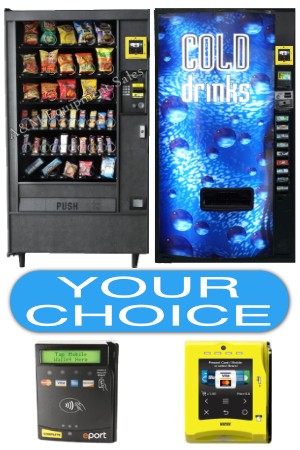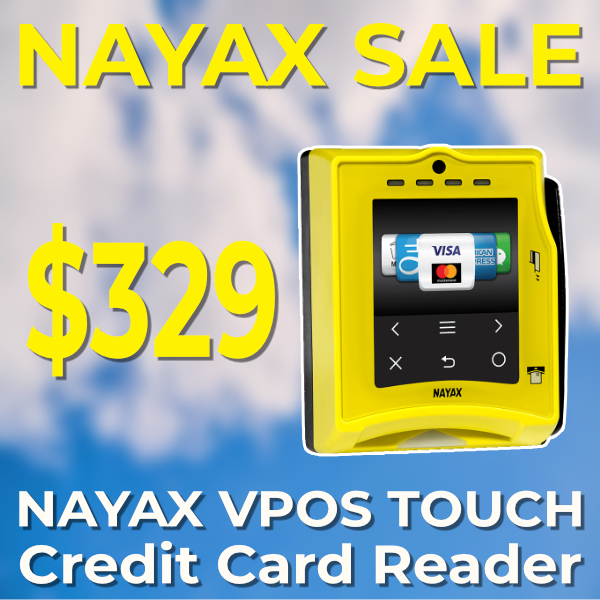Vending How Reliable a Business Venture HoIt’s time to turn our attention to whether vending is a viable business to enter, as well as the average cost for a very important part of the business: the vending machine.
Vending How Reliable a Business Venture?
The first recorded vending machines date back to the first century B.C., but came to prominence in the late 1880s. These were primarily postcard and gumball machines with simple mechanisms, a single selection and accepted one coin.
The snack and soda machines we recognize today – multi-selection, accepting multiple coin types, dispensing change – originated in the 1940s. In the ‘40s, of course, vending machines accepted coins only, did not dispense change, and limited selections about 20 items. These were fully mechanical vend mechanisms and required no power to operate the vend cycle.
Early soda machines required power to refrigerate the product. The modern vending machine design with spiral dispense, full change capacity, dollar bill acceptance (usually by dollar bill coin changer), 30-40 snack selections, and up to 10 soda options, came to being in the late 1960s and was refined in the 1970s.
Improvements in vending machine technology since have been based on electronics and computer innovation, with standardization of protocols and improvements in currency acceptance. Ultra-modern vending machines can accept a variety of payment types – credit cards, large denomination bills (up to $100), cell phone charges (charging a product to your cell phone bill) – can be monitored remotely by Internet, can produce sales figures to individual unit numbers (sold 13 Snickers and 8 Doritos out of this machine last week), log machine entry times, and can even provide surveillance with camera technology. Yes, we’ve come a long way, baby.
So how is this history lesson relevant? Vending machine technology is responding to market need. The successful vending operators have driven this technology with their purchasing habits. Like all businesses, if technology affords a profitable advantage, that product has a market. The fact that the vending machine manufacturers have continued to produce better and better vending machines means that the vending business is a reliable venture when run properly.
Vending How Reliable a Business Venture? Like all businesses, proper operations is the key to success. Learning about your account market, the kind of locations and businesses you serve, learning about marketing, the product you are you going to sell, and the type/s of vending equipment you’ll use, all these factor into the success of your vending machine business.
Vending How Reliable a Business Venture? There are thousands of successful vending machine companies in the United States, and if you think the vending business is for you, offer to work for a company in another city for free. For free, are you kidding?! Instead of taking that week’s vacation on a cruise, work for a vending machine company: learn all you can about every aspect of the business – load trucks, fix machines, look at the accounting, install machines. Pay attention to the products sold, the order in which they go into the vending machine, find out what sells best, ask questions. The real-world education you will receive will be invaluable. One week’s worth of effort can literally save you hundreds of thousands of dollars. (And an operator in a different city than yours won’t feel threatened by your business plans.)
The vending machine business is an established industry, so don’t try to reinvent the wheel. . .at least not at first. Work a proven system until you achieve profitability, then implement new systems to improve your economies of scale. Don’t fall into the trap of believing that the rules of the business do not apply to you.
So what do vending machines cost?
The first criteria in determining cost depends upon the location for which the vending machines are destined.
Most successful vending operators have a formula to determine the value of the equipment to be placed into a given account. In our surveys of hundreds of companies, we have found that most operators want to pay off the equipment with 9 months’ profit from the vending machine account. This equates to about half of the gross sales for a 9-month period. If they project an account to do $10,000 in sales in 9 months, then the equipment cost should be $5,000 or less. Less effectively produces more profit from your vending machine investment.
Now that you have a budget (based on your agreement with the customer), it’s time to find the vending machine equipment. You have two basic choices:
- Used vending machine equipment
- New vending machine equipment
New vending machine equipment is straightforward: find the brand and model you feel comfortable with. New equipment ranges from $2,000 to $10,000 per vending machine and depends on the type of machine, as well as its options. Types include snack machines, soda machines, refrigerated machines, frozen food machines, change machines, and more. Options include payment methods, size of vending machine, number of selections, electronics packages, and so forth.
Used vending machine equipment has many options on pricing, from free to several thousand dollars. With all used machines, make sure you have a clear title. Be extremely careful in buying a branded machine (Coke, Pepsi, M&M, etc.), because many of these machines are owned by the brand company, which retains ownership rights. If you purchase one of these machines, you could find yourself either losing the machine without compensation, or heading to jail for possession of stolen property.
Most free vending machines have been abandoned when an operator went out of business. You can also find operators selling their vending equipment through the want ads. Both of these venues generally require a tremendous amount of work to get the vending machine location-ready. While the initial cost might be low, the time and repair costs can be excessive, making other alternatives actually less expensive in the long run.
Reputable used vending machine equipment suppliers sell equipment at several levels: as-is, as-is working, refurbished (several levels), and like new. As-is and as-is working are similar to free machines or those found through want ads. I don’t suggest these options unless you are a highly skilled mechanic with access to a large parts inventory.
Instead, I suggest you concentrate on refurbished vending machines. Select the refurbishment level that the customer needs, and stick to your pre-determined budget. Expect to pay at least $1,000 per machine. And don’t forget shipping, which can be considerable and is a part of the cost of vending machine equipment. Check out the Vending Business Show Vending Machine License: Is It Something You Need?



